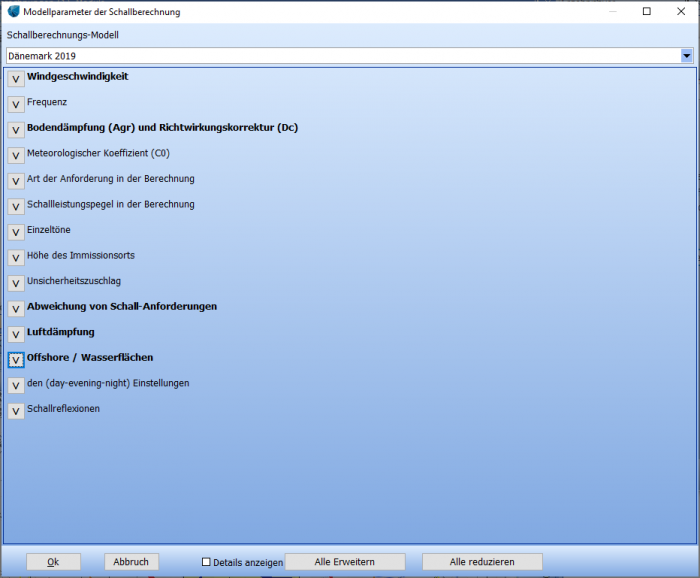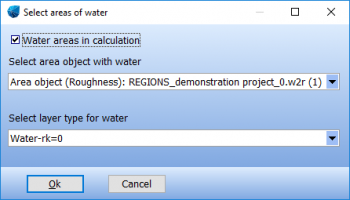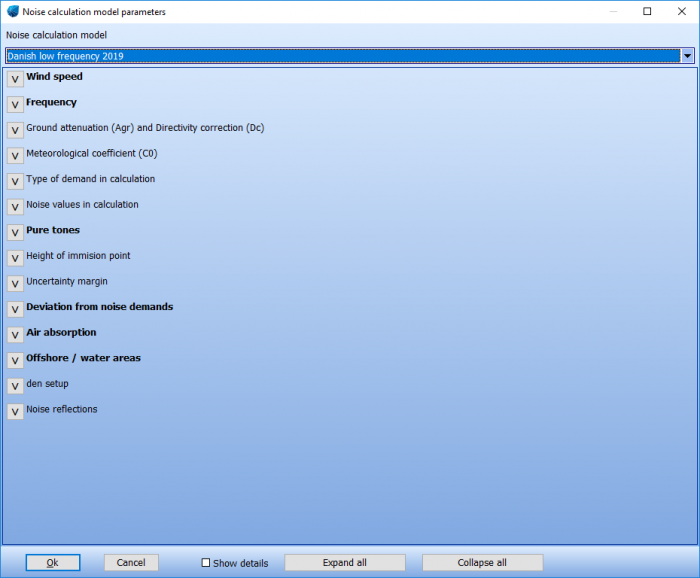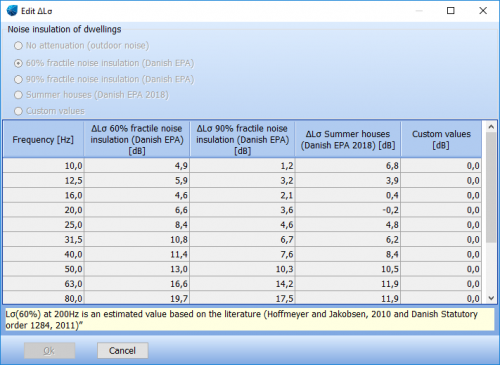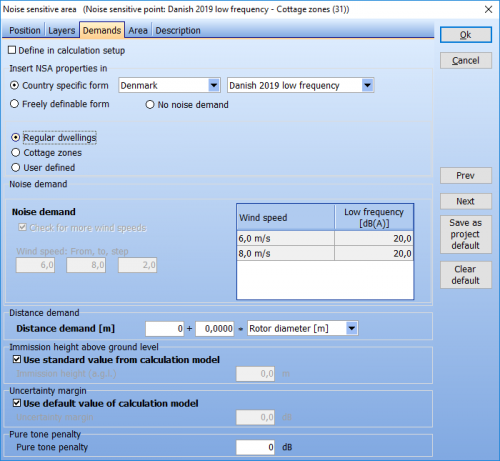Dänische Vorschrift 2019 (Englisch)
Zur deutschen Hauptseite | Alle deutschsprachigen Seiten
From February 2019 the Danish noise code has changed to "Bekendtgørelse om støj fra vindmøller, Bekendtgørelse nr 135 af 07/02/2019", from the Danish Ministry of the Environment.
This code is associated with a guideline, published 11th February 2021 called “Støj fra Vindmøller”, Vejledning fra Miljøstyrelsen nr. 51, 2021.
The code is almost identical to the 2011/2015 code except for the following points:
- The low frequency calculation now differentiates between regular dwelling and dwellings in cottage zones, the latter by using a reduced noise insulation table
- Offshore calculations, regular and low frequency, now includes multiple wakes across water.
- Offshore calculations of regular noise now include a transition zone of 200 m on the coastline before being replaced by ground attenuation for land as in the low frequency calculation
- Tonality penalties may cover a range of values. The fixed penalty is therefore abandoned and replaced by free selection of penalty value.
The following describes the model only where it deviates from the 2011/2015 model.
Pure tones
As for the 2011/2015 model the tonality penalty is added to the total impact at the receptor and is controlled by the NSA representing the receptor. A value from 0 to 6 dB is possible. The calculation will ignore any tonality settings on the WTG object.
Offshore / water areas
The calculation will either consider all wind turbines onshore or define those turbines within an area defined as “Water area” as offshore while all other wind turbines are considered onshore. The propagation model for the specific turbine is controlled by this designation. From the offshore wind turbine and until landfall an offshore ground attenuation is used. At the shoreline a transition zone of 200 m exist where the model linearly will change to onshore ground attenuation. While over water multiple reflections will add to the calculation. The longer the stretch of water the larger this component, Lm will be (see the appendix for technical documentation of calculation models). From the shoreline the multiple reflection component will not increase any further but will remain a base value in the noise impact.
Water areas are defined through an Area object, where a specific area type can be designated as water area
Low frequency calculation
The low frequency Danish 2019 noise calculation can be selected “Danish low frequency 2019”.
The procedures around pure tones and offshore calculations are identical to the regular noise calculation.
Noise limits The noise limit for low frequency noise is uniformly 20 dB at any receptor (indoor) at 6 and 8 m/s at 10 m height. In the noise receptor properties, select Danish 2019 Low frequency. The form allows for two kinds of receptors, Regular dwellings and Cottage zones. In the calculation a reduced noise insulation value is used cottage zones as described in the statutory order.
The calculation can handle that some receptors are regular, and some are cottage zones.
The noise insulation values can be viewed but not edited by pressing the View button in the Frequency group.
Weitere Themen
